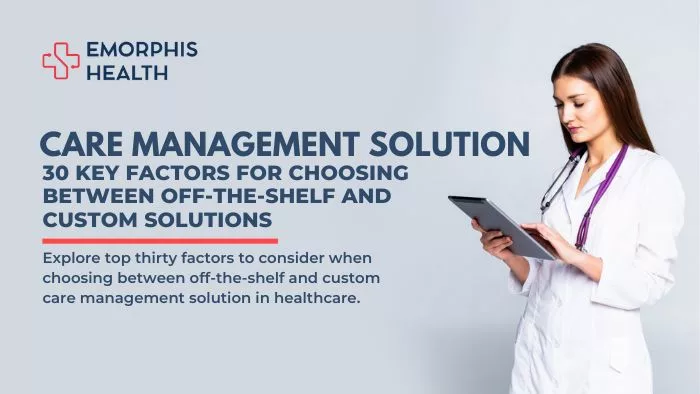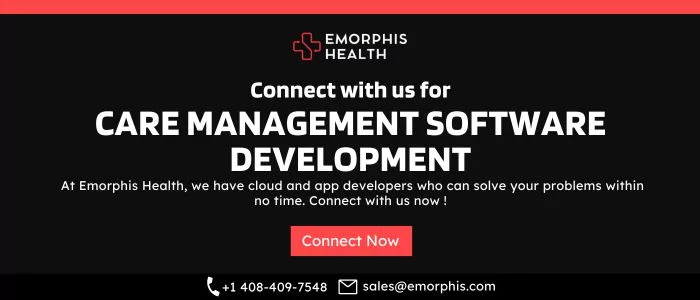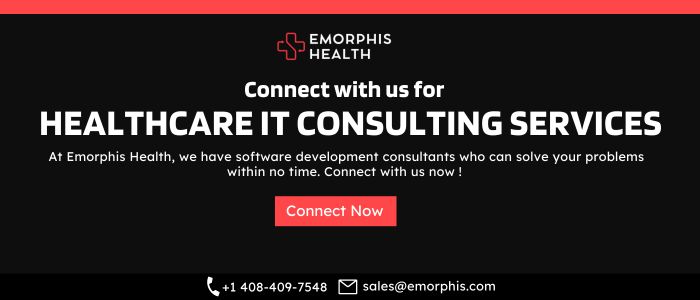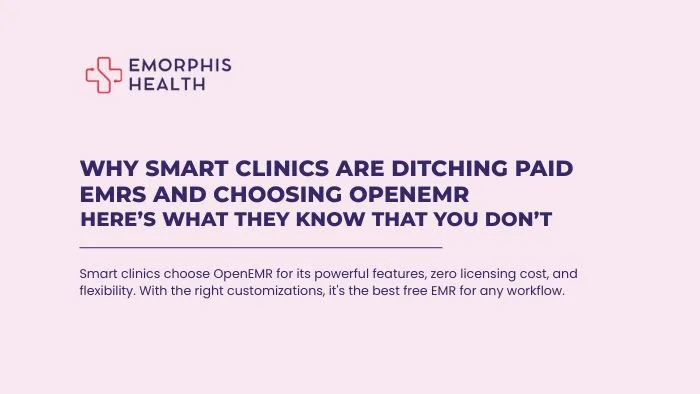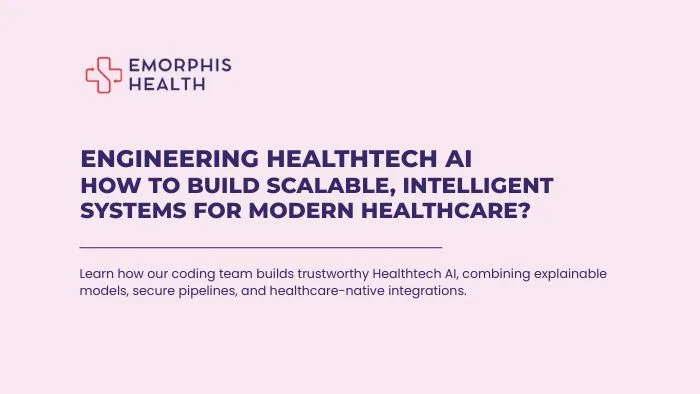Choosing a care management solution, whether it’s an off-the-shelf product or a custom development, is a significant decision for a healthcare organization.
Here are important factors to consider before making that choice.
Top 30 Factors for Choosing Between Off-the-Shelf and Custom Solutions
See Contents
1. Organizational Needs and Goals
Assess your organization’s specific needs, objectives, and long-term goals in care management. Consider what problems you are trying to solve and the outcomes you want to achieve.
2. Scalability
Evaluate whether the solution can scale with your organization’s growth and evolving requirements. Ensure it can accommodate an increasing patient load or expanding services.
3. Customization Requirements
Determine the level of customization needed to align the solution with your workflows, processes, and unique requirements. Customization can be crucial for optimizing care delivery.
4. Integration Capabilities
Check the solution’s ability to integrate with existing systems, such as EHRs, billing, and laboratory systems. Smooth integration is vital for efficient data sharing and care coordination.
5. Budget and Cost Considerations
Understand the total cost of ownership, including upfront costs, ongoing maintenance, and any hidden expenses. Compare the costs of off-the-shelf solutions to the potential investment in custom development.
Connect with us for the Best Services and resources for your healthcare software product engineering.
6. Time to Implementation
Determine the urgency of implementation. Custom solutions may take longer to develop and deploy compared to subscription-based solutions, which are ready to use.
7. Regulatory Compliance
Ensure that the chosen solution complies with healthcare regulations and standards relevant to your region, such as HIPAA in the United States.
8. Data Security and Privacy
Assess the solution’s data security measures, encryption standards, and privacy controls to safeguard patient information.
9. User Experience (UX)
Evaluate the user-friendliness of the solution’s interface and consider how easily your staff can adapt to it. A well-designed UX can enhance productivity.
10. Support and Maintenance
Take into account the presence and caliber of support and maintenance offerings. Custom solutions may require in-house or contracted IT support.
11. Vendor Reputation and Reliability
Research the solution provider’s standing and dependability. Look for customer reviews, references, and case studies to gauge their track record.
12. Interoperability
Ensure that the solution can communicate and share data with other systems and providers, fostering seamless care coordination.
13. Training and User Adoption
Plan for user training and adoption strategies to ensure that staff can effectively use the solution to its full potential.
14. Future-Proofing
Consider how adaptable the solution is to future changes in healthcare technology and regulations. Can it evolve with industry trends and emerging technologies?
15. Competitive Advantage
If differentiation from competitors is a priority, assess whether the solution can offer unique features or functionalities that set your organization apart.
16. Vendor Lock-In
Consider the implications of vendor lock-in. Determine if the solution allows you to easily migrate data or adapt to other systems if necessary.
17. Data Insights and Analytics
Evaluate the solution’s data analytics and reporting capabilities. Advanced analytics can provide valuable insights into patient outcomes and care quality.
18. Usability Testing
Conduct usability testing with potential end-users to ensure the solution meets their needs and preferences. User feedback is valuable in optimizing the user experience.
19. Data Ownership and Control
Clarify who owns and controls patient data within the solution. Ensure that you can access, export, and manage data as needed.
20. Redundancy and Disaster Recovery
Assess the solution’s redundancy and disaster recovery capabilities to minimize downtime and data loss in case of system failures or emergencies.
21. Change Management
Develop a comprehensive change management plan to facilitate the adoption of the new solution among staff members. Smooth transitions are essential for minimizing disruptions.
22. Vendor Flexibility
Investigate the flexibility of the vendor or development team in accommodating changes, updates, and enhancements to the solution as your organization’s needs evolve.
23. Interoperability with Devices and Wearables
If remote patient monitoring or wearable devices are part of your care management strategy, ensure that the solution can seamlessly integrate and communicate with these technologies.
24. User Support and Training Costs
Calculate the costs associated with training staff members to use the solution effectively. Consider ongoing training needs as well.
25. Return on Investment (ROI)
Analyze the potential ROI of the solution by estimating the financial and operational benefits it can bring compared to its costs.
26. Vendor Relationships
If choosing a subscription-based solution, consider the vendor’s approach to building long-term relationships and their willingness to adapt to your organization’s changing needs.
27. Accessibility and Inclusivity
Ensure that the solution is accessible to all patients, including those with disabilities, to meet legal requirements and improve patient satisfaction.
28. User Feedback Mechanisms
Establish mechanisms for gathering ongoing feedback from both healthcare providers and patients to make continuous improvements to the solution.
29. Mobile Accessibility
Determine whether the solution offers mobile access through smartphones and tablets, as this can be crucial for flexibility and patient engagement.
30. Analytics and Reporting Flexibility
Assess the flexibility of the analytics and reporting tools to customize reports, track key performance indicators (KPIs), and generate insights tailored to your organization’s needs.
By carefully considering these factors and conducting a thorough needs assessment, healthcare organizations can make an informed decision regarding the choice between a pre-built care management solution and custom solution development that aligns with their unique requirements and objectives.
Now let us check some of the key differences between off-the-shelf and custom care management solutions.
Care Management Solution – Off-the-shelf vs. custom care management solution
Comparison between choosing an off-the-shelf solution and custom development for a care management solution
| Factors | Off-the-Shelf Solution | Custom Solution Development |
|---|---|---|
| Customization | Limited customization options. | Fully customizable to specific needs. |
| Implementation Time | Quick deployment as it’s pre-built. | Longer implementation due to development. |
| Scalability | Limited scalability; may require additional fees for expansion. | Can be designed to scale with growth. |
| Integration | May require third-party integrations; integration options vary. | Seamless integration with existing systems. |
| Cost | Lower upfront costs; and recurring subscription fees. | An upfront development costs. |
| Ownership and Control | Limited control as it’s managed by the provider. | Full ownership and control over the solution. |
| Data Security and Compliance | Security and compliance are managed by the provider. | Can implement specific security measures and comply with regulations. |
| Maintenance and Support | Maintenance and support are typically included in the subscription fee. | May require in-house or contracted IT support. |
| User Training and Adaptation | Users may require less training due to standardized interfaces. | Customized user training programs may be necessary. |
| Responsiveness to Changing Needs | Updates and feature enhancements are determined by the provider’s schedule. | Can be quickly adapted to changing organizational needs. |
| Initial Investment Risk | Lower initial investment but ongoing subscription costs. | Higher initial investment with potential long-term cost savings. |
| Competitive Advantage | Limited competitive advantage as it’s shared among multiple users. | Can provide a competitive edge through unique features. |
| Data Insights and Analytics | Analytics capabilities may vary depending on the provider. | Can offer advanced data analytics tailored to specific requirements. |
| Vendor Lock-In | Potential vendor lock-in; data migration may be required if switching providers. | No vendor lock-in; flexibility to choose technology partners. |
The choice between an off-the-shelf solution and custom development should align with your organization’s specific needs, budget, and long-term goals. Consider these factors carefully to make an informed decision.
Why should you go for a custom care management solution development?
Custom care management solution development refers to the process of creating a healthcare management software system or platform that is tailored specifically to the needs, workflows, and requirements of a healthcare organization. Rather than using pre-built, off-the-shelf software, custom development involves designing and building a software solution from the ground up to meet the unique needs and objectives of the healthcare provider.
Custom care management solution development can offer numerous advantages for healthcare organizations. Here are some compelling reasons why opting for a custom solution can be a wise decision:
a. Tailored to Specific Needs
Custom solutions are designed with your organization’s unique needs, workflows, and requirements in mind. They are not constrained by the one-size-fits-all approach of off-the-shelf solutions. This tailoring ensures that the solution aligns perfectly with your care management processes.
b. Optimized Efficiency
Custom solutions can streamline processes and workflows to a degree that is impossible with off-the-shelf alternatives. This optimization can lead to significant efficiency improvements. Moreover, it can help reduce the administrative burden and increase staff productivity.
c. Improved Patient Care
Custom solutions can be developed to incorporate features that specifically enhance the quality of patient care. This includes personalized care plans, patient engagement tools, and data-driven decision support systems. They can empower healthcare providers to make more informed clinical decisions and deliver better care outcomes.
d. Scalability
Healthcare organizations often experience growth and evolving requirements. Custom solutions can be designed to scale seamlessly with these changes. Whether you need to accommodate more patients, expand services, or integrate new technologies, custom solutions can adapt accordingly.
e. Integration Capabilities
Custom solutions can be seamlessly integrated with your existing systems, such as Electronic Health Records (EHRs) and laboratory systems. This integration ensures a cohesive healthcare ecosystem where data flows seamlessly between different components.
f. Data Security and Compliance
With custom development, you have full control over data security and compliance measures. You can implement specific security protocols and adhere to industry-specific regulations, such as HIPAA in the United States, to protect sensitive patient information.
g. User Experience (UX) Design
A well-designed custom solution can offer a user-friendly interface and experience. This enhances usability and makes it easier for healthcare providers to adopt and utilize the system effectively. Moreover, an intuitive interface can improve overall staff satisfaction and retention.
h. Flexibility and Adaptability
Custom solutions can adapt quickly to changing needs and circumstances. In fact, they can evolve with industry trends, emerging technologies, and evolving patient demographics, ensuring that your organization remains at the forefront of healthcare innovation.
i. Competitive Advantage
Custom solutions can provide a competitive edge by offering unique features and functionalities that set your organization apart from competitors. This distinctiveness can also enhance your organization’s reputation and attract more patients.
j. Cost-Effective in the Long Run
While initial development costs may be higher than off-the-shelf solutions, custom solutions often offer a better return on investment (ROI) over time. The improved efficiency, reduced errors, and better patient outcomes they deliver can lead to significant long-term savings.
Overall, a custom care management solution development offers the flexibility, efficiency, and adaptability needed to meet the specific demands of healthcare organizations. Moreover, it empowers healthcare providers to deliver higher-quality care, fosters innovation, and positions your organization for success in an ever-evolving healthcare landscape.
Conclusion
The decision between choosing an off-the-shelf or custom care management solution is a critical one. The choice should align with the specific needs, goals, and circumstances of the healthcare organization. This comprehensive exploration of 30 key factors for making that decision underscores the importance of a well-informed choice.
Off-the-shelf solutions offer quick deployment and lower initial costs, making them suitable for organizations with limited resources and straightforward needs. However, they come with limitations in customization, scalability, and control, potentially hindering a healthcare organization’s ability to deliver optimal care.
On the other hand, custom care management solutions provide unparalleled advantages in terms of tailoring functionality, optimizing efficiency, and ensuring seamless integration. They empower healthcare providers to deliver higher-quality care, adapt to changing requirements, and maintain control over data security and compliance. While they may involve higher initial costs, the long-term benefits, including improved patient outcomes and cost savings, can be substantial.
Ultimately, the decision between off-the-shelf and custom solutions hinges on a careful evaluation of the organization’s needs, budget, long-term goals, and commitment to delivering exceptional care. It is a decision that should be made with foresight, considering both immediate and future requirements in the ever-evolving field of healthcare.

